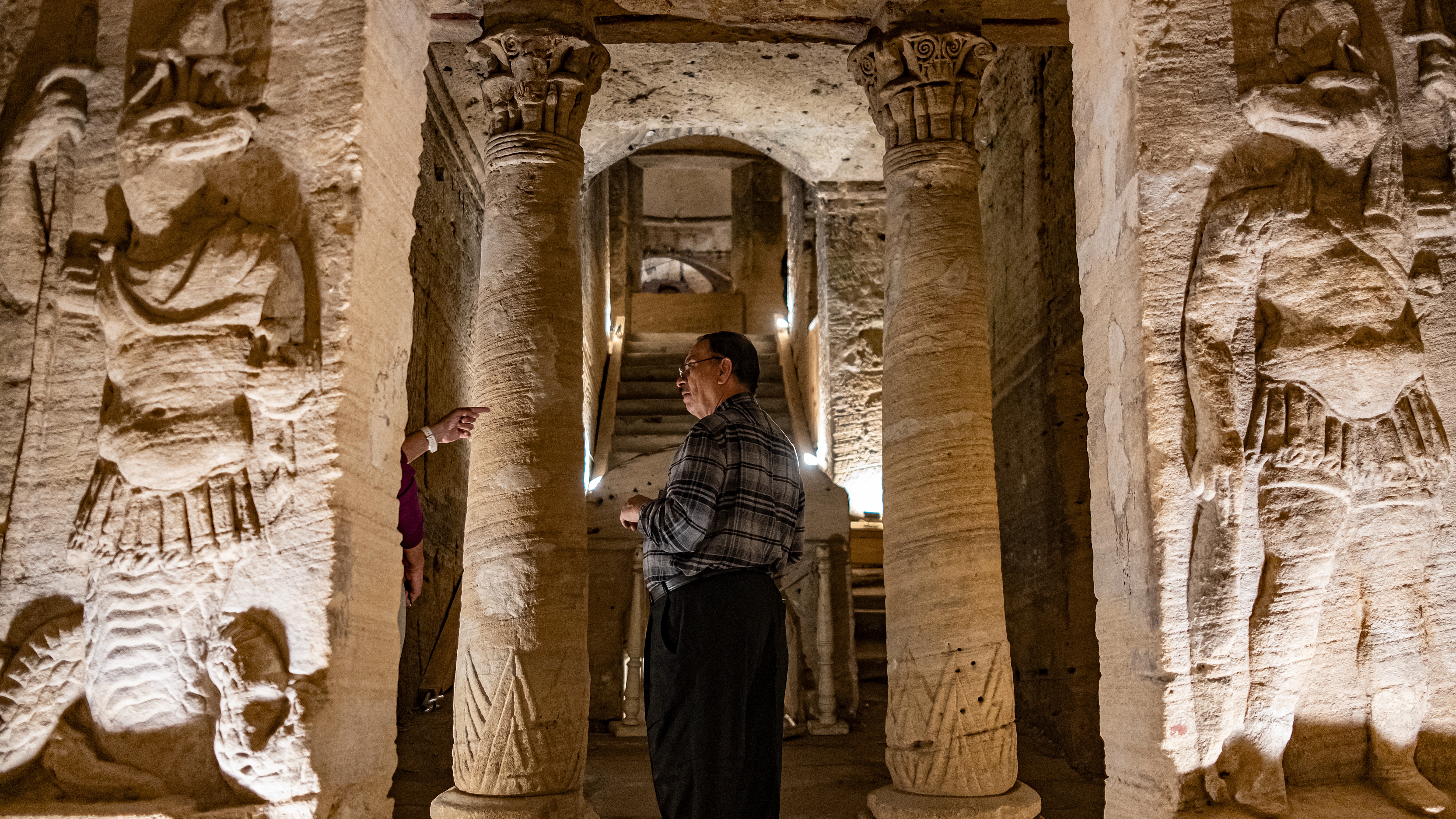Archaeologists ought to take into account tapping into satellite tv for pc imagery when assessing the impacts local weather change can have on historic underground buildings, a brand new examine argues.
Satellite tv for pc research can be one device to assist monitor and stabilize “underground heritage websites” on Earth which might be changing into extra weak to human-induced local weather change, flash floods, urbanization and different threats, the Aug. 12 examine in Heritage Science states.
Particularly, the examine focuses on the traditional metropolis of Alexandria, Egypt. This space is probably greatest recognized for the well-known Lighthouse (or Pharos) of Alexandria, which was accomplished round 280 BCE throughout the reign of Ptolemy II, in line with Britannica.
The lighthouse was mentioned to be one of many seven historic wonders of the world — whereas not standing, it is only one instance of the archaeological potential of Alexandria. Local weather change, nonetheless, is affecting subterranean Greek, Roman and Egyptian tombs and necropolis within the area as these buildings have been inbuilt porous limestone (calcarenitic) rocks which might be weak to water.
Associated: 4 superb astronomical discoveries from historic Greece
“Local weather change is rising the variety of pure disasters like flash flooding, heavy rain and sea degree rise and their intensive unfavorable influence on UNESCO world pure and cultural heritage websites in Alexandria,” the examine states. (UNESCO is the United Nations Academic, Scientific and Cultural Group and maintains an inventory of heritage websites world wide.)
“Lately, the rising variety of pure disasters linked to local weather crises has put Alexandria’s underground and above floor cultural constructed heritage at larger danger than ever earlier than, which imposes new advanced challenges on us to safeguard the historic city material and constructed heritage in Alexandria,” the examine authors added.

Research writer Sayed Hemeda presents a case examine of injury imparted on the 2nd century AD Catacombs of Kom El-Shoqafa; in truth, the researcher had already examined the positioning throughout a number of peer-reviewed research previous to this one. Hemeda is a professor with Cairo College’s school of archaeology, specializing in architectural conservation.
Lonely Planet describes the positioning as “one of many final main works of development devoted to the faith of historic Egypt,” which is essential because it exhibits how Pharaonic and Greek types have been blended roughly 1,800 years in the past. The majority of Hemeda’s examine discusses attainable strategies to stabilize the rock when flooding and related local weather change-induced issues happen. However the implications are wide-ranging, because the catacombs’ points illustrate the significance of defending different historic websites weak to international warming as nicely.
Satellites have numerous instruments to trace buildings and actions beneath the Earth, comparable to ground-penetrating radar, to see outdated buildings or monuments, and gravity-based groundwater measurements to trace water. (NASA’s now-retired Gravity Restoration and Local weather Experiment or GRACE is a well-known instance of twin satellites utilizing gravity to look at water underground.)
Whereas satellite tv for pc pictures might be costly to acquire, open-access and older imagery have been used many instances in latest peer-reviewed literature. Hemeda cites a December 2023 examine of archaeological landscapes in Egypt’s Nile Delta for example of excellent dataset utilization from archives. That examine’s information got here from devices together with Landsat (a joint effort of NASA and the U.S. Geological Survey), the decommissioned spy satellite tv for pc collection referred to as Corona, and the Superior Spaceborne Thermal Emission and Reflection Radiometer instrument aboard NASA’s still-active Terra satellite tv for pc.
As an entire, satellite tv for pc research might help, Hemeda says, in analyzing “the broader influence of local weather change on archaeological websites, notably in weak areas just like the northern Nile Delta.”



